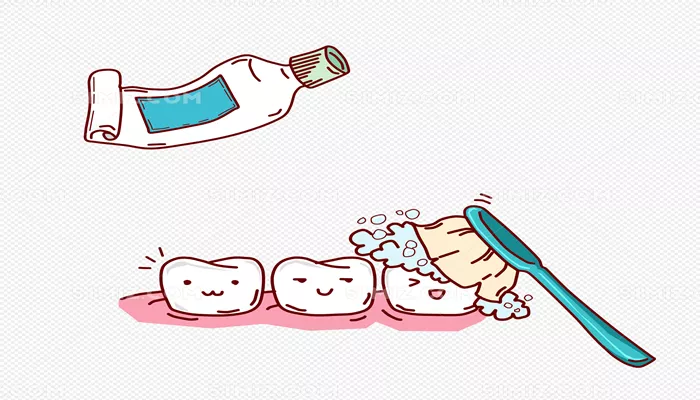Gum health is a crucial aspect of overall oral hygiene. Many people experience gum problems, often exacerbated by the buildup of tartar, a hardened form of plaque that can lead to gum disease. One common question among patients is whether gums can grow back after tartar removal. This essay will explore the relationship between tartar, gum health, and the potential for gum regeneration after professional dental cleaning. We will discuss the causes of gum recession, the effects of tartar, the process of tartar removal, and the possibilities for gum regeneration.
Understanding Tartar and Its Effects on Gums
What is Tartar?
Tartar, also known as calculus, is a calcified deposit that forms on teeth when plaque, a sticky film of bacteria, is not removed through regular brushing and flossing. When plaque remains on the teeth for an extended period, minerals from saliva crystallize and harden the plaque into tartar. This substance can form above and below the gum line, making it difficult to remove without professional dental intervention.
How Tartar Affects Gum Health
The presence of tartar can lead to a variety of gum problems. When tartar accumulates, it creates a rough surface that can irritate the gums. This irritation can cause inflammation, leading to gingivitis, the earliest stage of gum disease. If left untreated, gingivitis can progress to periodontitis, a more severe form of gum disease that can result in gum recession, tooth mobility, and even tooth loss.
Causes of Gum Recession
Gum recession occurs when the gum tissue pulls away from the teeth, exposing more of the tooth root. Several factors contribute to gum recession, including:
Poor Oral Hygiene: Inadequate brushing and flossing can lead to plaque buildup and tartar formation.
Genetics: Some individuals are genetically predisposed to gum disease and recession.
Hormonal Changes: Hormonal fluctuations, such as those during pregnancy or menopause, can affect gum health.
Tobacco Use: Smoking and other forms of tobacco can impair gum health.
Misaligned Teeth: Crooked teeth can create areas that are difficult to clean, leading to plaque buildup.
The Tartar Removal Process
Professional Dental Cleaning
The primary method for removing tartar is through professional dental cleaning, also known as prophylaxis. During this procedure, a dental hygienist or dentist uses specialized instruments to scale the teeth and remove tartar above and below the gum line. This process may involve:
Ultrasonic Scalers: These devices use vibrations to break up tartar and plaque.
Hand Instruments: Dental hygienists may also use hand tools to scrape away tartar.
Polishing: After scaling, the teeth are polished to remove any remaining plaque and to smooth the tooth surfaces.
Post-Removal Effects
After tartar removal, patients may experience some discomfort, sensitivity, or bleeding gums, especially if they have existing gum disease. However, these symptoms typically subside within a few days. The removal of tartar allows the gums to heal and can significantly improve overall gum health.
Can Gums Grow Back?
Understanding Gum Regeneration
The question of whether gums can grow back after tartar removal is complex. While gum tissue does not regenerate in the same way as skin or other tissues, there are circumstances under which gums can improve and become healthier after professional cleaning.
Factors Influencing Gum Regeneration
Severity of Gum Disease: The extent of gum disease plays a significant role in determining whether gums can improve. In cases of mild gingivitis, the gums may return to a healthier state after tartar removal and improved oral hygiene. However, in cases of advanced periodontitis, significant gum loss may have occurred, and gum tissue may not fully regenerate.
Oral Hygiene Practices: Maintaining good oral hygiene after tartar removal is crucial. Regular brushing, flossing, and dental check-ups can help prevent further gum recession and promote gum health.
Lifestyle Changes: Quitting smoking, improving diet, and managing stress can positively impact gum health. These changes can enhance blood flow to the gums and promote healing.
Professional Treatments: In some cases, additional treatments may be necessary to encourage gum regeneration. These treatments can include:
Scaling and Root Planing: A deep cleaning procedure that removes tartar and smooths the tooth roots to promote healing.
Gum Grafting: A surgical procedure that involves taking tissue from another part of the mouth and attaching it to the receded gum area.
Guided Tissue Regeneration: A surgical method that uses barrier membranes to direct the growth of new tissue.
The Role of Periodontal Maintenance
After tartar removal, it is essential to follow a periodontal maintenance program. This program typically involves more frequent dental cleanings and check-ups to monitor gum health and prevent the recurrence of tartar buildup and gum disease. Regular visits to the dentist can help catch any issues early, allowing for timely intervention.
Conclusion
In conclusion, while gums do not regenerate in the same way that other tissues do, there is potential for improvement in gum health after tartar removal. The extent of gum recovery depends on various factors, including the severity of gum disease, the effectiveness of oral hygiene practices, lifestyle changes, and any necessary professional treatments. By maintaining good oral hygiene and seeking regular dental care, individuals can significantly enhance their gum health and reduce the risk of further gum recession. Ultimately, prevention is key, and understanding the importance of managing tartar buildup can lead to healthier gums and a brighter smile.
Related topics:

